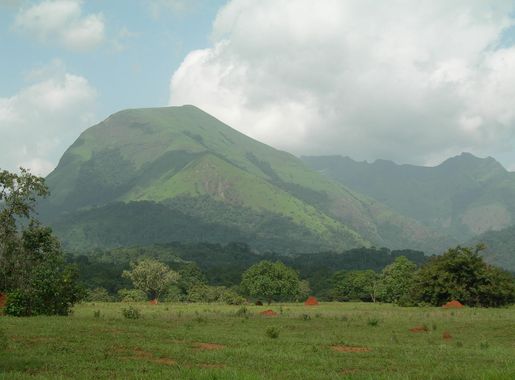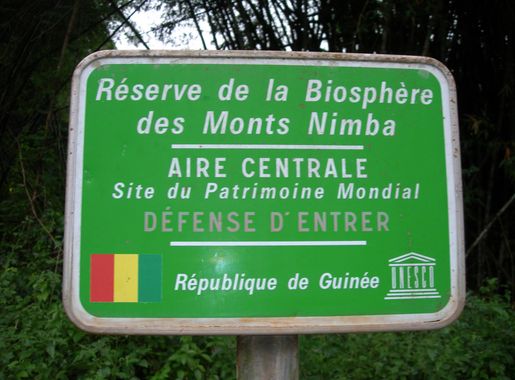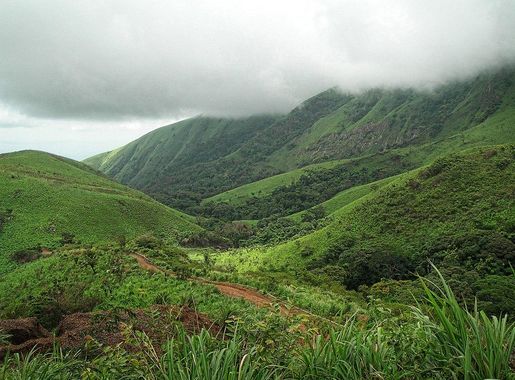
Mount Nimba Strict Nature Reserve: A Hidden Gem of Natural Beauty
Discover the untouched beauty and rich biodiversity of Mount Nimba Strict Nature Reserve in Guinea, a UNESCO World Heritage Site offering unique wildlife and cultural experiences.
Mount Nimba Strict Nature Reserve, located in the remote regions of Guinea, is a haven for nature enthusiasts and adventurers alike. This UNESCO World Heritage Site is renowned for its rich biodiversity and stunning landscapes, offering a unique experience for those looking to explore pristine natural environments. The reserve is home to a variety of endemic species, including the viviparous toad and the Nimba otter shrew, making it an exciting destination for wildlife enthusiasts. The towering peaks of Mount Nimba, covered in lush greenery, provide breathtaking views and numerous hiking opportunities. Trails vary in difficulty, catering to both novice hikers and seasoned trekkers. As you ascend, you'll encounter different ecosystems, from dense forests to open grasslands, each teeming with diverse flora and fauna. The cool mountain air and serene surroundings offer a refreshing escape from the hustle and bustle of city life. Cultural experiences also await at Mount Nimba, as the local communities surrounding the reserve are welcoming and eager to share their traditions. Visitors can engage with the locals, learning about their way of life and enjoying traditional Guinean hospitality. This combination of natural beauty and cultural richness makes Mount Nimba Strict Nature Reserve a must-visit destination for any traveler seeking an unforgettable adventure.
Local tips in Mount Nimba Strict Nature Reserve
- Wear sturdy hiking boots as trails can be steep and uneven.
- Bring a good camera for capturing the breathtaking landscapes and unique wildlife.
- Hire a local guide to enhance your experience and learn more about the area's biodiversity.
- Pack enough water and snacks, as there are limited facilities within the reserve.
- Visit during the dry season (November to April) for better hiking conditions and wildlife sightings.
- Respect local customs and traditions when interacting with the communities around the reserve.
Mount Nimba Strict Nature Reserve: A Hidden Gem of Natural Beauty
Mount Nimba Strict Nature Reserve, located in the remote regions of Guinea, is a haven for nature enthusiasts and adventurers alike. This UNESCO World Heritage Site is renowned for its rich biodiversity and stunning landscapes, offering a unique experience for those looking to explore pristine natural environments. The reserve is home to a variety of endemic species, including the viviparous toad and the Nimba otter shrew, making it an exciting destination for wildlife enthusiasts. The towering peaks of Mount Nimba, covered in lush greenery, provide breathtaking views and numerous hiking opportunities. Trails vary in difficulty, catering to both novice hikers and seasoned trekkers. As you ascend, you'll encounter different ecosystems, from dense forests to open grasslands, each teeming with diverse flora and fauna. The cool mountain air and serene surroundings offer a refreshing escape from the hustle and bustle of city life. Cultural experiences also await at Mount Nimba, as the local communities surrounding the reserve are welcoming and eager to share their traditions. Visitors can engage with the locals, learning about their way of life and enjoying traditional Guinean hospitality. This combination of natural beauty and cultural richness makes Mount Nimba Strict Nature Reserve a must-visit destination for any traveler seeking an unforgettable adventure.
When is the best time to go to Mount Nimba Strict Nature Reserve?
Iconic landmarks you can’t miss
Mount Richard-Molard
Experience the breathtaking landscapes and rich biodiversity of Mount Richard-Molard, a perfect destination for hiking and nature exploration.
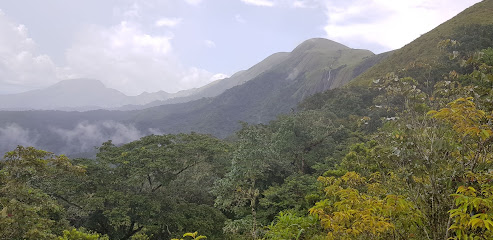
Totalreservat Berg Nimba
Discover the breathtaking biodiversity and stunning landscapes of Totalreservat Berg Nimba, a UNESCO World Heritage site in Guinea perfect for nature lovers.
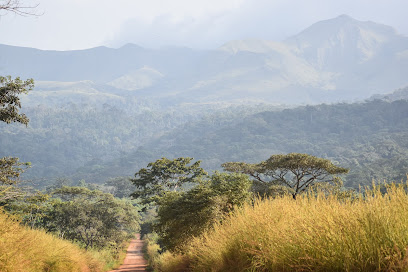
Mont Nimba
Explore Mont Nimba, a UNESCO World Heritage site in Guinea, renowned for its breathtaking landscapes, unique biodiversity, and adventure-filled hiking trails.
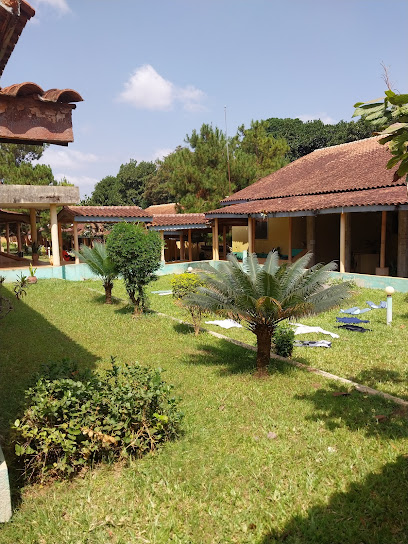
.
Explore the breathtaking Gouéla Nature Preserve in Côte d'Ivoire, a haven for nature lovers and wildlife enthusiasts amidst lush landscapes.
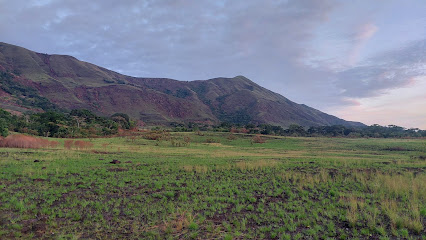
Nimba Range
Discover the breathtaking beauty and rich biodiversity of the Nimba Range, a UNESCO World Heritage site in Guinea that promises adventure and cultural richness.
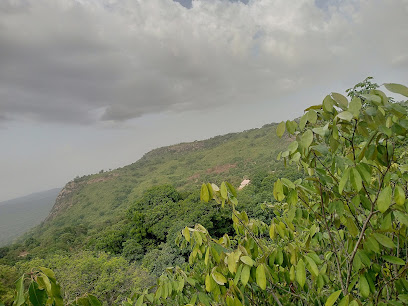
Unmissable attractions to see
Mount Richard-Molard
Explore the breathtaking landscapes and serene beauty of Mount Richard-Molard, a must-visit mountain peak for nature lovers and adventure seekers.
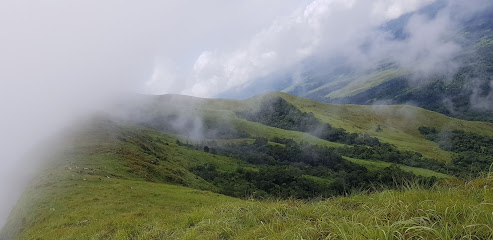
Nimba Range
Discover the breathtaking beauty and rich biodiversity of the Nimba Range in Guinea, a UNESCO World Heritage Site perfect for nature lovers and adventurers.
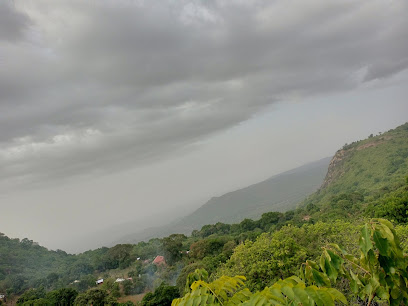
Nimba Nature and Environment Initiative
Explore the untouched beauty of Nimba Nature and Environment Initiative – a must-visit nature preserve in Gbarpa, Liberia, rich in biodiversity.
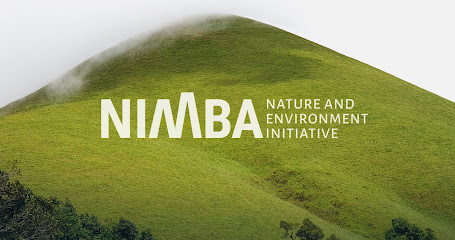
Nimba National Forest
Explore the untouched beauty of Nimba National Forest in Liberia, a haven for wildlife and nature lovers seeking adventure and tranquility.

East Nimba Nature Reserve Cornerstone
Explore the pristine wilderness of East Nimba Nature Reserve, a biodiversity hotspot in Liberia offering stunning landscapes and unique wildlife experiences.
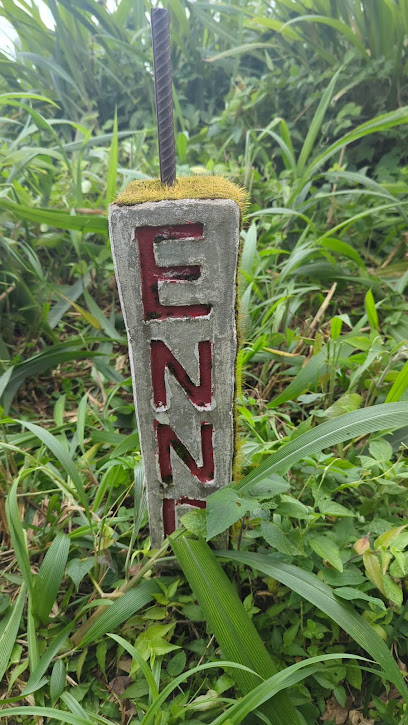
Essential places to dine
Avenue
Experience the authentic flavors of Guinea at Avenue, Conakry's premier restaurant offering delightful dishes in a warm atmosphere.
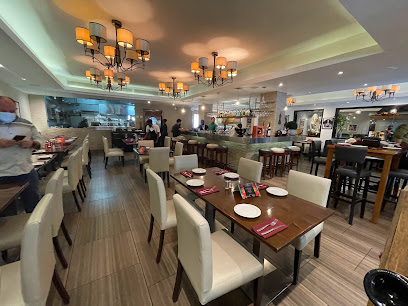
Le Special
Discover authentic Guinean flavors at Le Special in Conakry – where every meal tells a story.
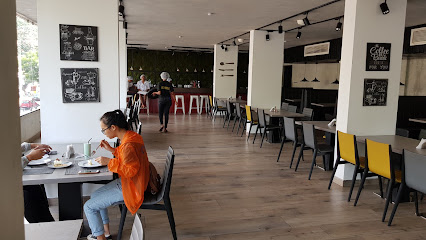
Hotel M'LYS
Experience comfort and culture at Hotel M'LYS in Conakry – a perfect blend for your travel journey.
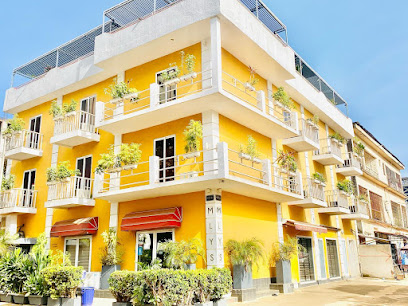
Italia Box
Discover the best of Italian cuisine at Italia Box in Conakry – where every dish is crafted with passion and authenticity.
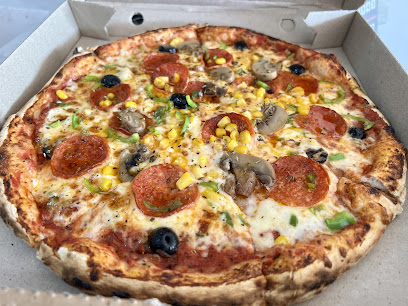
Restaurant Hanoi
Experience authentic Vietnamese cuisine in Conakry at Restaurant Hanoi - where every dish tells a story of flavor and tradition.
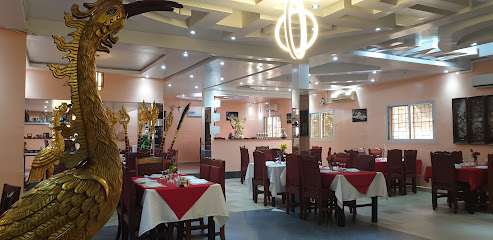
Favela
Discover Favela: A Culinary Gem in Conakry Offering Authentic Guinean Flavors and Vibrant Atmosphere.

Totalreservat Berg Nimba
Discover Totalreservat Berg Nimba: A UNESCO World Heritage site with breathtaking landscapes and rich biodiversity in Guinea.
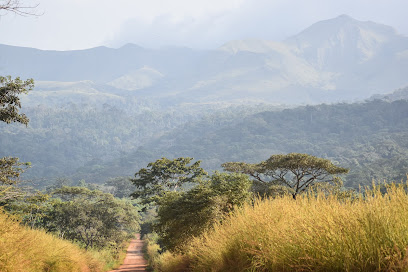
Mont Nimba
Discover Mont Nimba: A breathtaking UNESCO World Heritage Site rich in biodiversity offering stunning views and adventurous hiking trails.
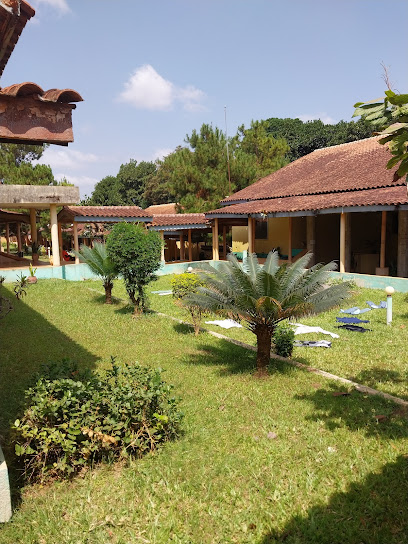
Restaurant Bantounka
Discover the flavors of Guinea at Restaurant Bantounka in Conakry—where local cuisine meets international flair.

Restaurant Africana
Experience authentic Guinean cuisine at Restaurant Africana in Conakry - where vibrant flavors meet warm hospitality.
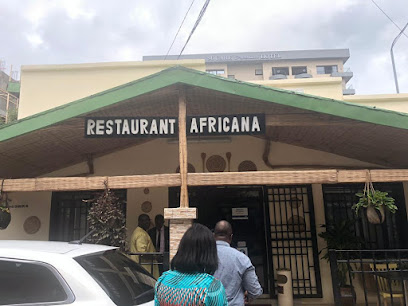
.
Explore the captivating beauty of Gouéla Nature Preserve in Côte d’Ivoire, where lush landscapes meet diverse wildlife in an eco-tourism paradise.
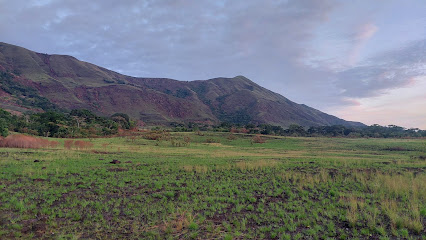
Nimba Range
Explore the breathtaking beauty of Nimba Range in Guinea - a paradise for hikers and nature enthusiasts with rich biodiversity.
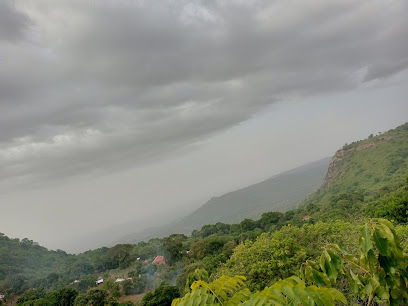
Nimba National Forest
Discover Nimba National Forest: A Pristine Wilderness in Liberia Rich with Biodiversity and Scenic Trails.

Kadina's Restaurants
Discover diverse culinary delights at Kadina's Restaurants in Conakry - your gateway to fast food and local flavors.

Markets, malls and hidden boutiques
Totalreservat Berg Nimba
Experience the natural wonder of Totalreservat Berg Nimba, a UNESCO World Heritage Site with stunning landscapes and rich biodiversity.
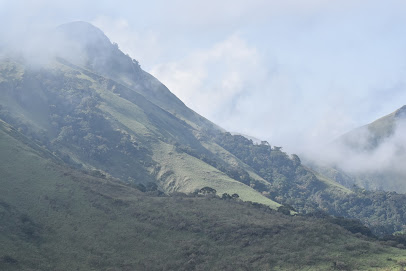
Yekepa Supermarket
Discover the heart of Yekepa at the Supermarket, where local flavors and community spirit come together for a unique shopping experience.
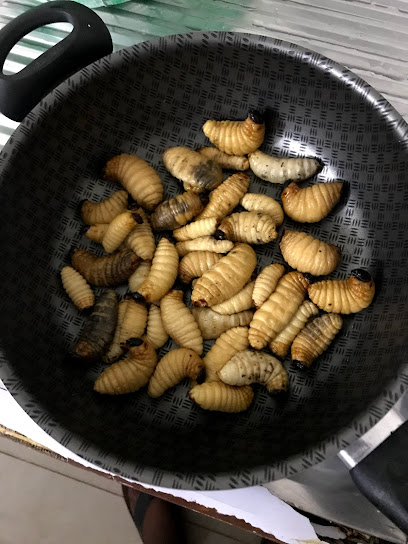
Boutique BARRY et Frères
Explore the authentic flavors of Guinea at Boutique BARRY et Frères, a charming grocery store in Nzerekore offering local products and warm hospitality.
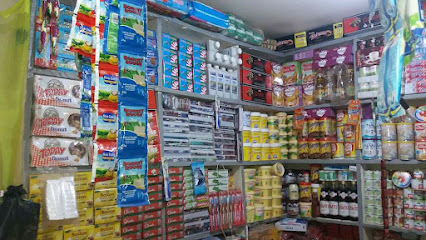
Green Bar
Experience the vibrant atmosphere of Green Bar, a local grocery store in Yekepa, Liberia offering fresh produce and community vibes.

Nimba prestation service NPS
Explore the vibrant Nimba Prestation Service in Nzerekore for unique stationery and local culture, perfect for gifts and travel essentials.

Able God Provision Shop
Discover local culture at Able God Provision Shop in Sanniquellie, where vibrant flavors and artisanal crafts await every traveler.
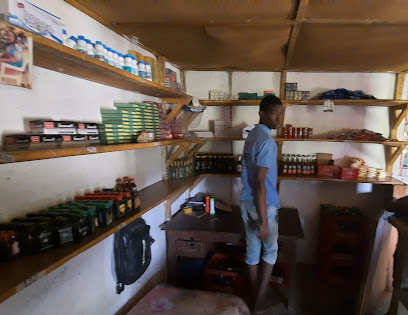
Boutique Marie Koulemou
Boutique Marie Koulemou: Experience the authentic flavors and vibrant culture of Nzerekore in this charming grocery store.

God's Devine Favor Business Center
Discover beauty treasures at God's Divine Favor Business Center in Sanniquellie, Liberia - your go-to cosmetics store.

Nimba Range
Explore the breathtaking Nimba Range in Guinea, a mountain paradise rich in biodiversity and cultural experiences waiting to be discovered.
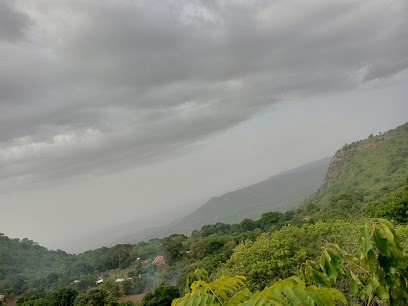
.
Discover the lush landscapes and diverse wildlife at Gouéla's Nature Preserve, a serene escape into nature's beauty in Côte d'Ivoire.
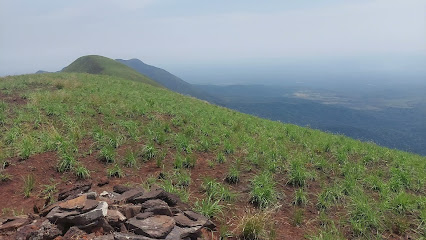
Boutique Fodé et fils
Discover the essence of Guinean craftsmanship at Boutique Fodé et fils, your premier destination for unique footwear in Nzerekore.
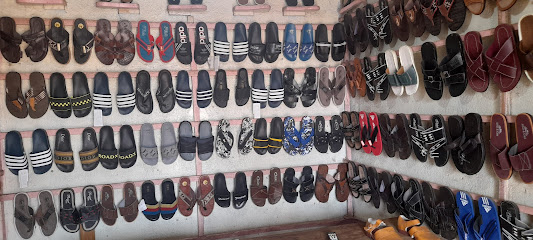
Store sweety backals
Experience the vibrant retail scene and local culture at Store Sweety Backals in Nzerekore, Guinea - a shopper's paradise!
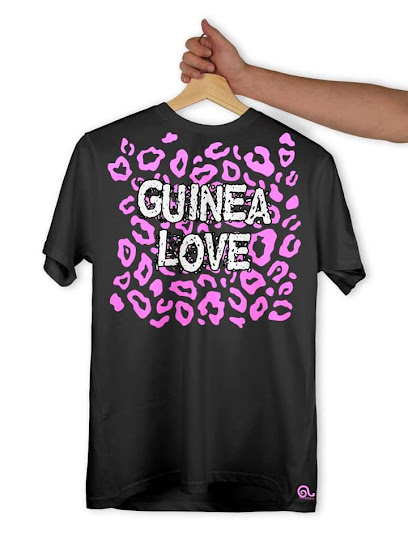
James 2 Nyanamah Medicine Store
Discover local health remedies and pharmaceutical care at James 2 Nyanamah Medicine Store in Sanniquellie, Liberia.

Hasata boutique
Explore unique fashion and vibrant local culture at Hasata Boutique in Nzerekore, Guinea, where style meets tradition.
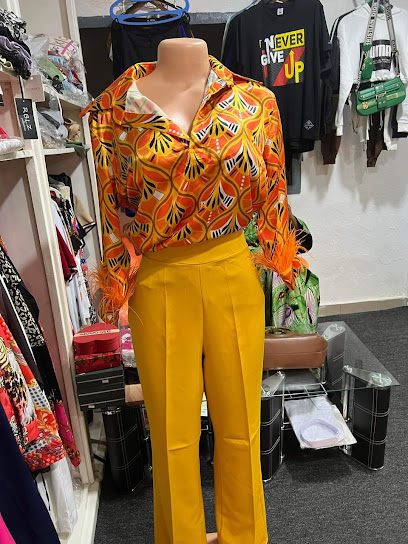
Zaly business 224
Experience the vibrant culture of Guinea through unique fashion accessories at Zaly Business 224 in Nzerekore.
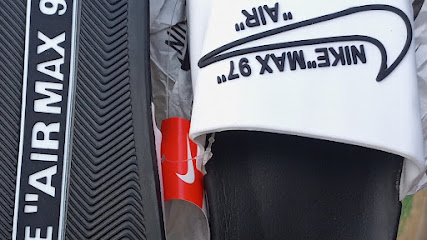
Essential bars & hidden hideouts
Kotianzaye Bar and Restaurant
Discover the vibrant flavors of Liberia at Kotianzaye Bar and Restaurant in Sanniquellie, where local dishes and warm hospitality await.

Le Jackpot
Experience the lively nightlife of Nzerekore at Le Jackpot, a vibrant bar offering local drinks and a welcoming atmosphere.
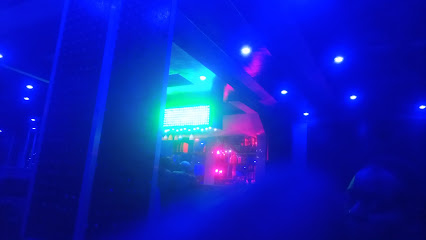
Mont blanc Bar
Discover the lively Mont Blanc Bar in Danané, where culture meets nightlife in a cozy ambiance filled with local flavors and vibrant music.
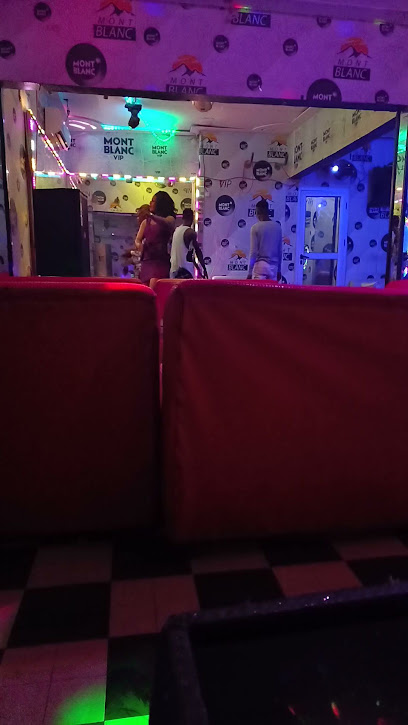
Jackie's Bar
Jackie's Bar in Yekepa: A lively spot to enjoy local drinks and immerse in the vibrant culture of Liberia.

Bar Gbogui
Experience the vibrant culture and local charm at Bar Gbogui in Zénémouta, Guinea - where every drink tells a story.
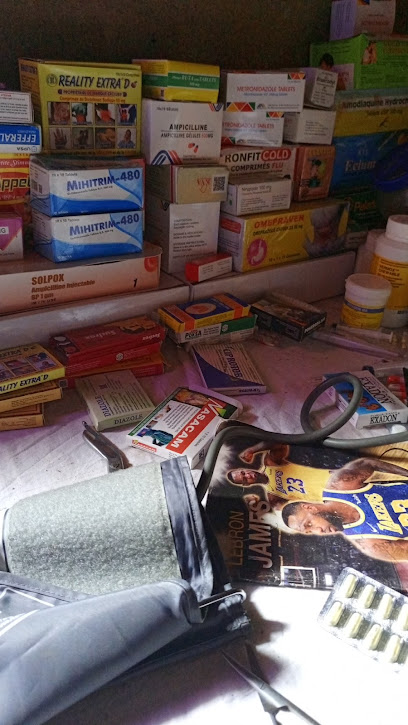
Plein air plus
Experience the vibrant atmosphere and refreshing drinks at Plein Air Plus, Nzerekore's top bar for tourists and locals alike.
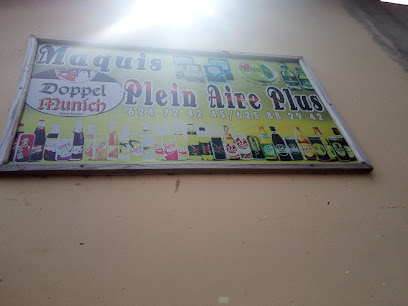
Las Vegas
Discover the thrilling nightlife, exquisite dining, and spectacular entertainment in Las Vegas, a true desert oasis of fun and excitement.
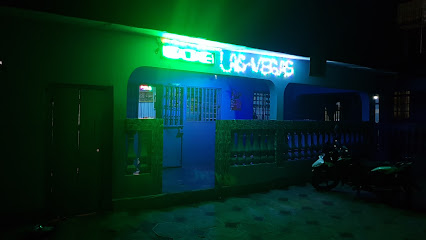
Restaurant Piscine Hôtel Nimba
Experience authentic West African flavors at Restaurant Piscine Hôtel Nimba in Nzérékoré, a culinary gem by the poolside.

Bar Café Diallo
Discover the heart of Nzerekore at Bar Café Diallo, where local culture and refreshing drinks create an unforgettable experience.

Nimba Range
Discover the breathtaking beauty and rich biodiversity of the Nimba Range, a UNESCO World Heritage Site in Guinea, perfect for nature lovers and adventurers.
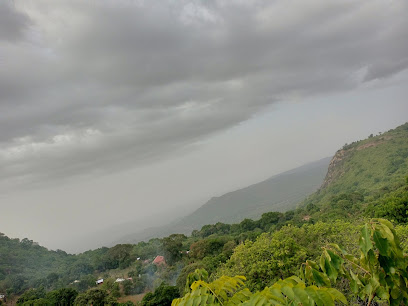
RESTAURANT CHEZ MAMAN AURORE
Savor the rich flavors of Guinea at Restaurant Chez Maman Aurore, where local cuisine meets warm hospitality in a charming setting.
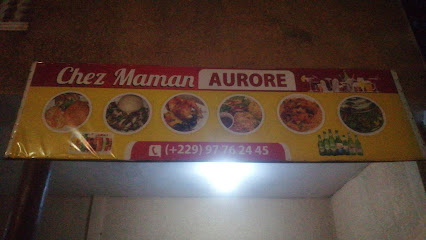
Bar Bafond
Discover the vibrant culture of Koule at Bar Bafond, a local bar inviting you to relax and enjoy authentic Guinean flavors.

Alvina lounge and bar
Experience local nightlife and warm hospitality at Alvina Lounge and Bar in Ganta, Liberia, a perfect spot to unwind and connect.

Bar gbantié
Discover Bar Gbantié in Nzerekore, where local flavors and vibrant culture come together for an unforgettable experience.

Zaly Boulevard
Discover the vibrant nightlife of Nzerekore at Zaly Boulevard, where refreshing drinks and local culture come together in a lively atmosphere.

Local Phrases about Mount Nimba Strict Nature Reserve
-
- HelloKo
[Koh] - GoodbyeTaa
[Tah] - YesEe
[Ee] - NoAa
[Ah] - Please/You're welcomeBolo
[Boh-loh] - Thank youDe
[Deh] - Excuse me/SorryDyeh
[Dyeh] - How are you?Yaa su ka laa?
[Yah soo kah lah] - Fine. And you?Yaa nyo. A yaa su?
[Yah nyoh. Ah yah soo?] - Do you speak English?A yaa nyo nenglees?
[Ah yah nyoh nen-glees?] - I don't understandA yaa laa hon
[Ah yah lah hohn]
- HelloKo
-
- I'd like to see the menu, pleaseA yaa di ga monaa, bolo
[Ah yah dee gah moh-nah, boh-loh] - I don't eat meatA yaa ka taa ko
[Ah yah kah tah koh] - Cheers!A yaa bolo
[Ah yah boh-loh] - I would like to pay, pleaseA yaa fuu, bolo
[Ah yah foo, boh-loh]
- I'd like to see the menu, pleaseA yaa di ga monaa, bolo
-
- Help!Yaa ley!
[Yah lay!] - Go away!Koo ley!
[Koh lay!] - Call the Police!A yaa nti polis
[Ah yah ntee poh-lees] - Call a doctor!A yaa nti dokita
[Ah yah ntee doh-kee-tah] - I'm lostA yaa taa
[Ah yah tah] - I'm illA yaa su
[Ah yah soo]
- Help!Yaa ley!
-
- I'd like to buy...A yaa loo...
[Ah yah loh...] - I'm just lookingA yaa ka yaa
[Ah yah kah yah] - How much is it?A gbeh sii yaa?
[Ah gbeh see yah?] - That's too expensiveEe laa dii kaa
[Ee lah dee kah] - Can you lower the price?A yaa maa ka yaa
[Ah yah mah kah yah]
- I'd like to buy...A yaa loo...
-
- What time is it?A gbeh ena yaa?
[Ah gbeh eh-nah yah?] - It's one o'clockEna ya kaa
[Eh-nah yah kah] - Half past (10)Naa yaa (10)
[Nah yah (10)] - MorningLey
[Lay] - AfternoonBaa
[Bah] - EveningNyi
[Nyi] - YesterdayYaa fii
[Yah fee] - TodayYaa laa
[Yah lah] - TomorrowYaa kaa
[Yah kah] - 1Kaa
[Kah] - 2Nyi
[Nyi] - 3Taa
[Tah] - 4Naan
[Nahn] - 5Naa
[Nah] - 6Doo
[Doh] - 7Daa
[Dah] - 8Naa kaa
[Nah kah] - 9Naa nyi
[Nah nyi] - 10Naa taa
[Nah tah]
- What time is it?A gbeh ena yaa?
-
- Where's a/the...?Ena na...
[Eh-nah nah...] - What's the address?A gbeh taa laa?
[Ah gbeh tah lah?] - Can you show me (on the map)?A yaa faa laa (na map)?
[Ah yah fah lah (nah map)?] - When's the next (bus)?A gbeh nyo (bus)?
[Ah gbeh nyoh (bus)?] - A ticket (to ....)Naa kaa (to ....)
[Nah kah (to ....)]
- Where's a/the...?Ena na...
History of Mount Nimba Strict Nature Reserve
-
Before the arrival of European explorers, the region around Mount Nimba was inhabited by various indigenous groups, including the Mano and Dan people. These communities lived in harmony with the natural environment, relying on the rich biodiversity of the area for sustenance and traditional practices. The mountain held significant spiritual value for these groups, featuring prominently in their folklore and rituals.
-
In the late 19th and early 20th centuries, European explorers, primarily French and British, began to survey the region. The unique biodiversity and rich mineral deposits of Mount Nimba caught their attention, leading to increased interest and eventual colonization. During the colonial period, the area saw significant changes as mining activities began to take shape, altering the landscape and impacting the indigenous populations.
-
In the early 1950s, extensive iron ore deposits were discovered in the Mount Nimba region. This discovery marked a significant turning point, leading to the establishment of mining operations. The Iron ore from Mount Nimba became one of Guinea's most valuable natural resources, drawing international investment and leading to the construction of infrastructure to support the mining activities.
-
Recognizing the unique ecological value of the region, the Mount Nimba Strict Nature Reserve was established in 1944 by the French colonial administration. The reserve aimed to protect the diverse flora and fauna, including several endemic species. In 1981, it was designated as a UNESCO World Heritage Site due to its outstanding universal value, specifically its rich biodiversity and rare species such as the Nimba viviparous toad and the Nimba otter shrew.
-
Over the decades, various conservation efforts have been initiated to protect the fragile ecosystem of Mount Nimba. These efforts include collaborations between international organizations, local governments, and indigenous communities. However, the reserve continues to face significant challenges, including illegal mining, deforestation, and habitat destruction. Conservationists work tirelessly to balance the protection of this unique environment while addressing the socio-economic needs of the local population.
-
Today, Mount Nimba is not only a natural treasure but also a cultural landmark. The mountain continues to hold spiritual significance for local communities, and traditional practices are still observed. Additionally, the reserve attracts researchers, conservationists, and eco-tourists from around the world, contributing to the local economy and raising awareness about the importance of preserving such unique ecosystems.
Mount Nimba Strict Nature Reserve Essentials
-
Mount Nimba Strict Nature Reserve is located on the border of Guinea and Côte d'Ivoire, with the nearest major city being Nzérékoré in Guinea. The most convenient way to reach Nzérékoré is by flying into Conakry International Airport (CKY) and then taking a domestic flight to Nzérékoré Airport. From Nzérékoré, the reserve is accessible by a combination of road transport. You can hire a 4x4 vehicle for the journey, which takes approximately 5-6 hours.
-
Transportation within the area around Mount Nimba is limited. The best way to explore the nature reserve is by renting a 4x4 vehicle, as the terrain can be challenging. Local taxis are available but may not be reliable for long journeys. Guided tours often include transportation and are a convenient option for those unfamiliar with the region.
-
The official currency in Guinea is the Guinean Franc (GNF). Credit cards are not widely accepted, so it is essential to carry cash. ATMs are available in major cities like Nzérékoré, but it is advisable to withdraw enough cash before heading to more remote areas like Mount Nimba. U.S. dollars and euros are sometimes accepted but should not be relied upon.
-
While Mount Nimba Strict Nature Reserve is generally safe for tourists, it is important to exercise caution. Avoid traveling alone, especially at night. Petty crime such as pickpocketing can occur in crowded areas, so keep your belongings secure. There are no specific high-crime areas targeting tourists, but staying vigilant is always recommended.
-
In case of an emergency, dial the local emergency number 117 for police assistance and 122 for medical emergencies. It is recommended to have travel insurance that covers medical emergencies, including evacuation if necessary. The closest medical facilities are in Nzérékoré, but they may be limited. For serious medical issues, it may be necessary to travel to Conakry.
-
Fashion: Do dress modestly; lightweight, breathable clothing is recommended due to the climate. Avoid wearing flashy jewelry. Religion: Do respect local religious customs; when visiting villages, dress conservatively. Public Transport: Do be patient, as schedules can be unpredictable. Don't expect English to be widely spoken. Greetings: Do greet people with a handshake and a smile. Greetings in French, such as 'Bonjour,' are appreciated. Eating & Drinking: Do try local dishes, but ensure your food is cooked thoroughly. Don't drink tap water; always opt for bottled water.
-
To experience Mount Nimba like a local, consider hiring a local guide who can offer insights into the area's unique biodiversity and cultural significance. Visit the local markets in Nzérékoré to buy fresh produce and traditional crafts. Engage with the local community; they are often friendly and willing to share their knowledge about the region.
Nearby Cities to Mount Nimba Strict Nature Reserve
-
Things To Do in Ganta
-
Things To Do in Gbarnga
-
Things To Do in Voinjama
-
Things To Do in Daloa
-
Things To Do in Kakata
-
Things To Do in Buchanan
-
Things To Do in Monrovia
-
Things To Do in Kenema
-
Things To Do in Yamoussoukro
-
Things To Do in Pujehun
-
Things To Do in Faranah
-
Things To Do in San-Pédro
-
Things To Do in Sassandra
-
Things To Do in Magburaka
-
Things To Do in Bonthe

